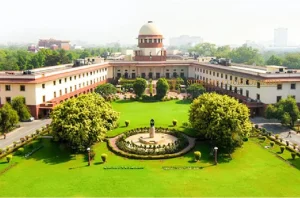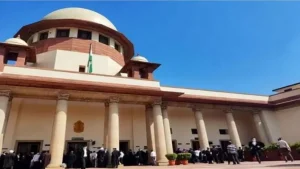

Capacity in the Judiciary
- /
- Articles and Blogposts /
- Capacity in the Judiciary
The Supreme Court has, in March 2017, passed an order in Hussain v. Union of India suggesting various steps that High Courts should take with a view to disposing of criminal cases, particularly bail petitions, in a speedy manner. This is the latest in a long line of decisions by the Supreme Court starting from Hussainara Khatoon in 1980 where the right to speedy trial has been recognised as a fundamental right under Article 21. Most of the orders, including the latest one, prescribe guidelines for High Courts and subordinate courts on disposing of criminal cases, including bail petitions and treatment of cases involving undertrial prisoners. These orders further mandate High Courts to frame rules for subordinate courts to enable implementing the principles declared by the Supreme Court. The important highlight of this latest order is the Supreme Court’s concern, bordering on helplessness, that even after so many earlier orders directing a speedy disposal by the Court, many criminal matters, particularly bail petitions, where unfinished trials involving under trial prisoners and convicts whose appeals are pending for a long time, keep coming up to the Supreme Court on the ground that the matters have been delayed.
For the Supreme Court, this is an unusual situation. The Court is used to dealing with a recalcitrant executive not following its orders from time to time. However, in this case, it is the judiciary itself that is non-compliant. Why are we faced with this situation and why has the Supreme Court not paused and examined, in the many cases that came before it, the reasons for its earlier orders not being implemented? While the Supreme Court has on a couple of occasions asked this question, it has not pursued such examination to its logical conclusion. Instead, the discussion has generally centred on the need for more courts, better infrastructure and more guidelines, rather than the capacity of the judiciary to effectively implement the earlier orders of the Supreme Court, which is the real problem.
Implementing the Supreme Court’s orders requires efficient day to day functioning of the subordinate courts, and in particular maximising a judge’s time on a daily basis for making decisions. On an average, a subordinate court judge spends 45-55% of court time each day in calling out matters and adjourning them rather than on hearing evidence and making decisions on substantive issues. This happens because the institutional mechanism that supports the judge is not geared up to assist him in managing his time in court better. It is this reality that has resulted in the inability of High Courts to effectively implement the case flow management rules (again mandated by another Supreme Court order) and the guidelines mentioned above. Capacity has to be developed to enable judges and administrative staff to use such technology and management processes to make their day more efficient. Unfortunately, neither the subordinate courts nor the High Courts have such capacity at the moment.
The focus of the judiciary in this country has always been the judge, based on the assumption that as long as judges do their work the judiciary will function properly. There is no doubting the assumption that judges are the fulcrum on which the judicial system functions. However, the administration that supports the judges also needs to be efficient to get the best out of the judges. Judicial administration, today, is unfortunately an orphan in this country. Judges have the responsibility for administering the judicial system and they do not have the time to do this given the burden of day to day judicial functions. We need full time career administrators, both at the High Courts and subordinate judiciary, to ensure that judges are able to discharge their judicial functions efficiently. Such administrators have to be professionals with experience in managing systems, technology and case processes. To safeguard judicial independence, they should report to the Chief Justice of each High Court.
Appointment of full time administrators will also give the subordinate judiciary an opportunity to succeed and implement the orders of the Supreme Court. Let us take the example of the day to day work load in a subordinate court. Cases are listed without any scientific basis and as a result of an ad hoc negotiation between judges and lawyers or on the basis of High Court or Supreme Court orders. If a case is listed today and one of the parties asks for an adjournment, the next date is arrived at after consulting both the lawyers. Almost always, neither the judge nor the lawyers have any idea of what is likely to happen on the next day of hearing as the workload of the court, the availability of the lawyers and the parties (if evidence is being adduced) is not really known accurately. So, there is only a chance that the matter may be heard on such identified date. This happens for about 90-95% of the cases listed on any given day. This not only creates uncertainty regarding proceedings in the court but also generates an impression of the court being busy whereas in reality, the court is not being as efficient as it can be. This uncertainty needs to be replaced with certainty. Similarly, the number of bail cases and cases of undertrials needs to be monitored regularly to ensure that they are heard and disposed at the earliest in accordance with the law laid down by the Supreme Court. All this can be done if there is a dedicated set of people in the High Court and the subordinate courts looking at court and case management to assist the judges.
Efficient judicial systems across the world have dedicated personnel for court administration who monitor various aspects like court management, daily cause list management and case management. In India, the judges themselves do this work. Even the registrar in charge of statistics or the building committee, is a judge. Of course, improving administrative processes will not solve the other hurdles that the judiciary faces, such as an uncooperative bar or the poor quality of legal education. However, if this lack of administrative capacity is addressed, the subordinate judiciary will at least have a chance in implementing the directions of the Supreme Court. Otherwise, the latest order will also be consigned to the long list of orders which are not adhered to.
The views expressed in this article are solely those of the author’s and they do not represent the views of DAKSH.

Harish Narasappa
RECENT ARTICLES


Lessons for Judiciary from Space Sector

The missing piece in India’s reform story—a strong tribunal system

Fast-track courts may not be the cure

-
Rule of Law ProjectRule of Law Project
-
Access to Justice SurveyAccess to Justice Survey
-
BlogBlog
-
Contact UsContact Us
-
Statistics and ReportsStatistics and Reports
© 2021 DAKSH India. All rights reserved
Powered by Oy Media Solutions
Designed by GGWP Design